Nationality Irish Known for book design and poetry | Name Althea Gyles Role Poet | |
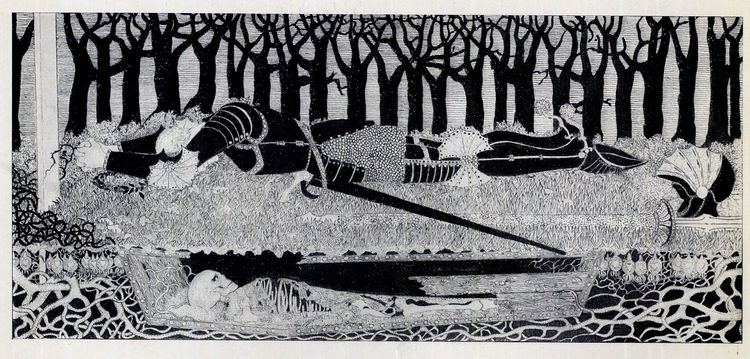 | ||
Full Name Margaret Alethea Gyles Died January 23, 1949, Beckenham, United Kingdom | ||
Meet althea gyles community asset mapping volunteer in august town kingston jamaica
Althea Gyles (1868 – 23 January 1949) was an Irish poet and artist. She is known for her book cover designs for writers such as W. B. Yeats.
Contents
- Meet althea gyles community asset mapping volunteer in august town kingston jamaica
- Early life
- Career
- Later life
- References
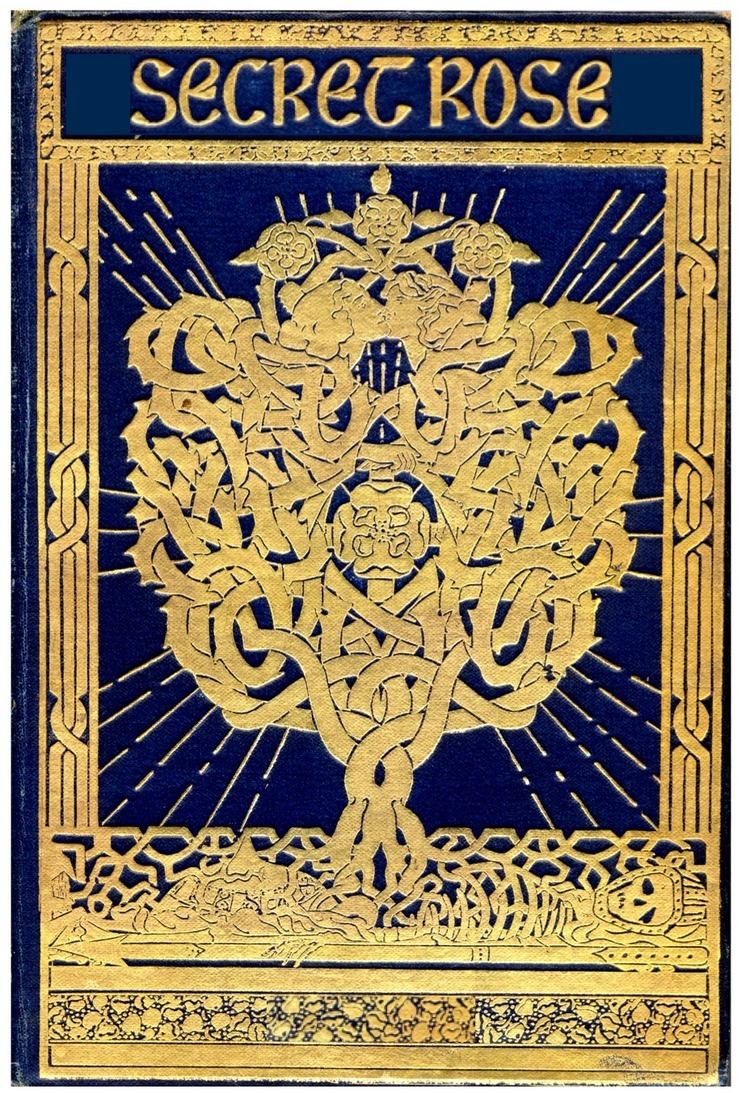
Early life
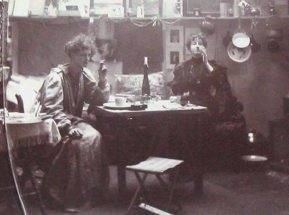
Margaret Alethea Gyles was born in 1868 at her family home, Kilmurry, County Waterford. George Gyles, her father, was from a prominent Anglo-Irish family, and according to W. B. Yeats were "so haughty that their neighbours called them the Royal Family." Her mother, Alithea Emma Gyles, was the daughter of the Bishop of Hereford, Edward Grey. The family moved to Dublin in 1889. Gyles severed ties with her family, and reportedly supported herself by selling a watch and writing a few stories for an Irish paper. At this time she attended an art school on St Stephen's Green. Due to her poor living conditions and poverty, E. J. Dick invited her to live in the "household", a theosophical commune at 3 Ely Place. Others living in there were Dick's wife and George Russell. When W. B. Yeats joined the household in 1891, he described her as "a strange red-haired girl, all whose thoughts were set upon painting and poetry." Gyles fought with the Dicks, returning to "starvation and misery [which] had a large share in her ritual of worship." While living at 53 Mountpleasant Square, she wrote an unpublished novel, The woman without a soul, the plot of which focuses on a black magician.
Career
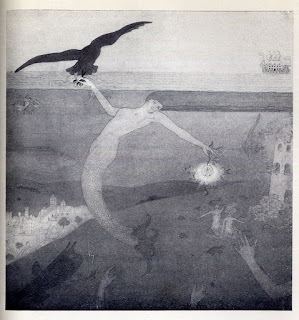
Gyles left Dublin for London in 1892, where she resumed studying art, firstly at Pedders, and then at the Slade School of Fine Art from 1893. Whilst in London she mixed with writers, including Oscar Wilde, who rated her work highly. Gyles had established a studio at 86 Charlotte Street, Fitzroy Square by 1896. By this time, she was friends with the art critic Lady Colin Campbell and the artist Mabel Dearmer. Gyles's poem, Dew-time, was published in the Pall Mall Magazine in October 1894. She also illustrated the poem, which was influenced by George Russell. In June 1896, her drawing The Offering of Pan appeared in The Commonweal., and in 1897 she illustrated of T. W. Rolleston's Deirdre: the Feis Ceoil Prize Cantata. Around this time she and Yeats' became interested in the Hermetic Order of the Golden Dawn, the cabbalistic iconography of which influenced her design of the cover of Yeats' book The Secret Rose (1897). She also designed the cover of Poems (1899), and The wind among the reeds (1899). Gyles created a cover design for Father Matthew Russell's The idylls of Killyowen (1898).

Both Yeats's and Gyles were acquaintances of Aleister Crowley, with whom Gyles had a romantic affair. Their experiences with magic and astral vision are chronicled by Crowley as his fictional characters with Crowley as Count Swanoff, Gyles as Hypatia Gay, and Yeats' as Will Bute. In 1899, Gyles illustrated Wilde's The Harlot's House, which was published by Leonard Smithers. Gyles became involved with Smithers, which eventually caused Yeats to distance himself from her. Later in 1899, she designed the covers for Ernest Dowson's Decorations, which featured a stylised rose that Yeats described as her "central symbol." She incorporated four swirling birds pecking at a heart between a sun and a moon with stars for the top board of The Night (1900) by John White-Rodyng. By mid-September 1900, Arthur Symons discovered her in an empty room at 15 Granby Place, Hampstead Road, "without a thing in the place, except five books (one a presentation copy from Oscar Wilde) and one or two fantastic gold ornaments which she used to wear; chloral by her side, and the bed strewn with MSS." Gyles had left her library with Yeats previously, to avoid the bailiffs. Symons sold Gyles' poem For a Sepulchre to the Saturday Review. She was recovering from the Hospital for Diseases of the Chest in the City Road when Smithers went bankrupt. She offered Smithers £6 towards Wilde's funeral in November 1900, which he refused.
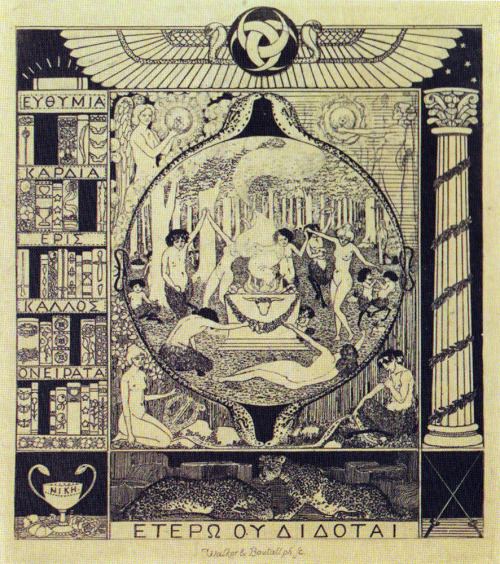
Symons described Smithers as "a drunken brute whom no one could stand" who had "left her as soon as he had alienated her other friends." The breakdown of Smithers and Gyles' relationship led to a collapse in her health, from which she never recovered completely and her work as a productive designer was effectively over. Her only surviving work is the rejected frontispiece for Yeats The Wind Among the Reeds, which was reused for The Shadowy Waters (1900), and is held in the British Library. The spinal design for The Secret Rose was reused in the 1902 edition, but it is unknown if she was involved in this redesign. In 1903, her front and rear cover designs for The Wind Among the Reeds were redrawn, but it is unlikely she redrew them. Subsequently, Yeats refused a number of her spinal design.
Gyles published verse occasionally with the Saturday Review, the Candid Friend, The Kensington, The Venture, The Academy, Orpheus, and The Vineyard. Her financial difficulties continued, refusing help from her family. Gyles' friend, Cecil French, described her as "a noble difficult being who invariably became the despair of those who had helped her." Although she had compiled a volume of her verse, it remained a transcript due to her inability to proof it, claiming "the effort would kill her; nor was anyone else allowed to correct the proofs." The transcripts are held in Arthur Henry Bullen's archive. Compton and Faith Mackenzie visited her at her home in Paradise Walk, Chelsea, describing her living conditions as having "an atmosphere of squalid poverty", leading to the couple inviting her to Cornwall in May 1908.
One of her incomplete projects was that of an alphabet she was designing, The alphabet of the wonderful wood from around 1906. Eleanor Farjeon described her as "quite exquisitely gifted, as a writer and an artist; with the sort of temperament that stood in her own light" but that she was "fascinating and exhausting." She published Letters to Children about Drawing, Painting, and Something More in 1914, under the name John Meade.
Later life
Although she continued to work, writing, painting, she also drifted, with ill health. She also gravitated towards movements and interests such as horoscope writing, Buddhism, anti-vivisection, and vegetarianism, whilst being supported by dissatisfied patrons like Clifford Bax, who considered her a parasite. The publisher, Grant Richards, encouraged her to write her memoirs of the 1890s. As a result, she wrote a novel, Pilgrimage, which Richards rejected in February 1921, though he continued to request a memoir until early 1924. She wrote to Farjeon in the 1930s, at the time she was living in a Brixton basement, in awful conditions with a big mongrel dog. The last address recorded for her was 19 Tredown Road, Lewisham, at which time her room was bare save for a chaise longue, a few items of bric-à-brac and her manuscripts. Gyles died in a nursing home at 69 Crystal Palace Park Road, Beckenham, Kent, on 23 January 1949. Compton based his character of Ariadne Berden on Gyles in his novel Tatting (1957).
Photographs of Gyles with Constance Markievicz where discovered in 2007. Her manuscripts are now in the collections of the University of Reading.
